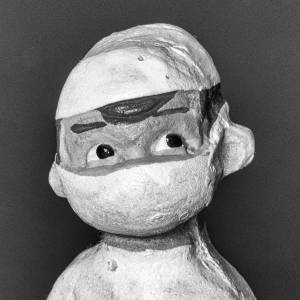MonoMonday: Time Capsule Musings
ApolloFly would like us to take a “Time Capsule” approach for today’s MM challenge – especially pondering what we’d put in a capsule to be looked at in 20 years time.
I’ve gone a bit further back to review the history of audio and video recording, thinking of what folks might have put in previous time capsules over the last century-and-a-bit.
I don’t have any artefacts from the original cylinder phonographs of the late 19th Century so I have to start with the 78rpm record, invented in 1898 and lasting right through to the late 1950s – quite a long era. So such items in a time capsule created in 1898 wouldn’t have looked strange 20 years later in 1918, or even in 1958. Sadly however, these records, made of shellac, were a tad fragile – as you can see in the photo!
Reel-to-reel tape, popular from the 1940s to 1980s marginally preceded the vinyl album (which became popular from the late 1950s to the 1980s – and is undergoing a renewal of interest in the 21st century). Therefore vinyl records are not strange to many of us even now. Reel-to-reel tape is only of historical interest to most of us in 2022 but even it has undergone a bit of a revival: in 2018 the first reel-to-reel recorder came onto the market after a gap of well over 20 years!
The audio cassette came into prominence in the late 1960s and made possible audio-on-the-move when the Walkman players came along in 1979, and cassettes would still be recognised as common 20 years later.
Audio CDs were invented in the same year (1979) but only came to the market in 1982: they became very popular so that over 200 billion had been sold by their 25th anniversary – and 40 years on they’re still popular and familiar. “Walkman” CD players also became available during this time, but in 1992 the Minidisc player came on the scene – it was much smaller and lighter. The Minidisc player seen here is accompanied by wired earphones of course. It however had a rather short life, as no new players were made after 2013 and its star had been fading for some years before that following the development of solid state devices (such as the iPod in 2001 and the Creative Zen in 2004).
Along with all this, video recording formats were developing. Videotape (in the form of Reel-to-Reel and U-Matic) was really only used professionally until the VHS/Betamax wars of the early 1970s (various other formats also joined the fray for a while) but VHS won. Most of us still recognise VHS cassettes almost 40 years from their introduction but the last recorder was made in 2016.
Digital video recording (as DVDs) came properly to the domestic market in the late 1990s, marking the beginning of the decline of VHS tapes. Over 20 years on we can still buy them and they remain quite ubiquitous. (They followed the larger Laserdisc released in 1978 but it never really caught on to any extent.)
Bluray and HD-DVD came onto the scene in 2006 and fought a similar war to the VHS/Betamax fight, but as we know Bluray won that battle – and the Bluray disc shown here is even a 3D one (if you have a suitable TV – we still have a 10-year-old TV which is 3D capable but it seems to have fallen by the wayside since then – in less than 20 years!). Bluray does of course remain quite popular now - but by its 20th anniversary in 2026 who knows if it'll still be so widely used.
Finally for the present we’ve all started streaming audio and video into our homes – and even wherever we are, using our phones if necessary as seen bottom right. And we don’t even need wired earphones now that Bluetooth is so good.
So – what will someone in 2042 think of our present tech? What will they be using I wonder? We can already ask Alexa (et al) to deliver whatever music/shows/video we want – will we just need to think of what we want to have it relayed to us? Who knows!

Comments
Sign in or get an account to comment.


